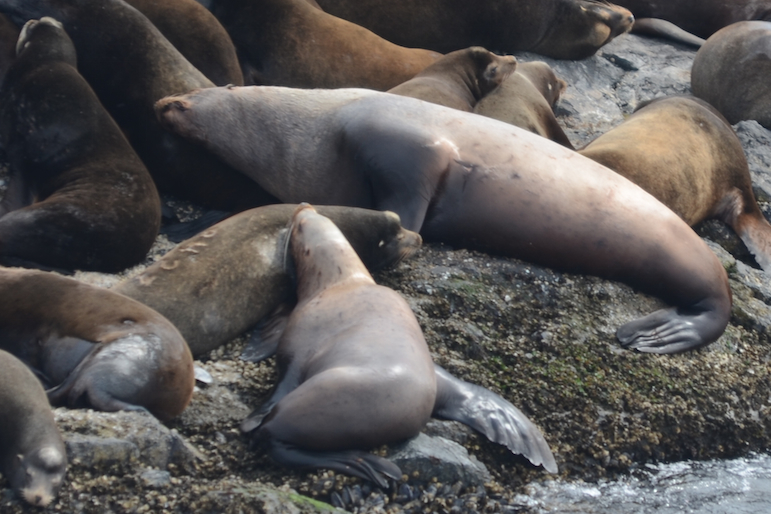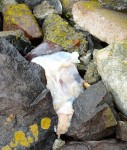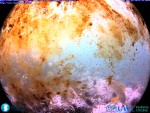The weather was much more subdued today with light winds and a morning switch in direction to the east, northeast and then back to westerlies at sunset. The sky was partially overcast but more sunny than cloudy with only the slightest of showers. The barometer continued its very slow and not very steady, decline that began on Thursday. The forecast is for more of the same. Today’s full moon was in total eclipse early this morning and although I was up at 5:00 AM, I did not see it, maybe that is because it was totally eclipsed ; – )?
Only two tour boats were noted within the Ecological Reserve today and they both kept their speed down and seemed to be very respectful of the wildlife. There was no fishing activity noted inside the Conservation Area. A couple of Kayakers were paddling in the Ecological Reserve today and they were very close to the sea lions. They managed to make it past them without any disturbance, but the sea lions woke up after the kayakers passed. They were only concerned enough to do some neck craning and alert behaviour before falling back asleep.

Paddler passes close by sleeping sea lions.

The two kayaks regroup after getting by the sea lions on South Islands.

Sea lions wake up and smell the kayakers. Looking alert but not too disturbed.
Ecologically things were very much like the previous two days, the gulls are slowly becoming a little more territorial and parental looking. I saw two holding nesting material in their bills today and several pairs were doing a synchronous bill down dance that might demonstrate to the other how beautifully they will be able to regurgitate into any chicks they might produce together. I also witnessed some nasty bill holding that drew blood and descended into an outright wrestling match. I was not sure if these gulls were territorial competitors or mates but they were determined to not let go of each other. Gulls are supposed to mate for life so it makes me wonder, when I see the same gulls sitting poignantly all alone, on their spots, day after day. Is their mate missing in action or just late?
The Canada Geese are very broody and in some places are running the gulls off. Some geese are already incubating four to eight eggs per clutch. I guess the crows know this and there is often a small murder of crows strutting around the nesting areas and also being chased off by the geese.
The Bald Eagles are here all day everyday right now and I watched one adult chase off another so there must be something good to eat. Is it gulls? The chase was quite spectacular with climbs and dives and at one point, upside-down flying in self defence. The defeated intruder headed over to Bentick Island.
It wasn’t sunny enough today to just go with solar power and I had to run the generator for a couple of hours in spite of having no extra draw on energy. I know the day is coming when there will be enough sunshine to go through a whole day, entirely on solar power.
Thirteen visitors came to the island today. Chris brought out a group of eight students and his son accompanied him with a school friend. Alex was deckhand again and brought his father who was visiting, along for the brief version of the Race Rocks tour. Alex’s Dad likes using the Race Rocks video cameras, so one more reason that I need to figure out how to get cameras #2 and #5, back up and running. The students will go back mid-day on Monday and are already earning their keep.
Chores were a mix of entropy fighting of today. It was really nice to know that there is lots of water in the midst of churning compost and the usual tasks. I am still tidying up wood and very grateful to Alex and Virginie for all the firewood and lovely kindling. I also want to thank Nick for leaving the house so spick and span, very nice.





































